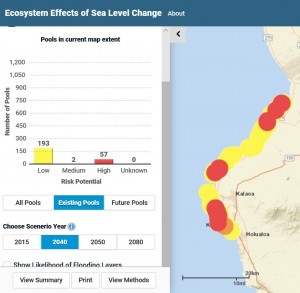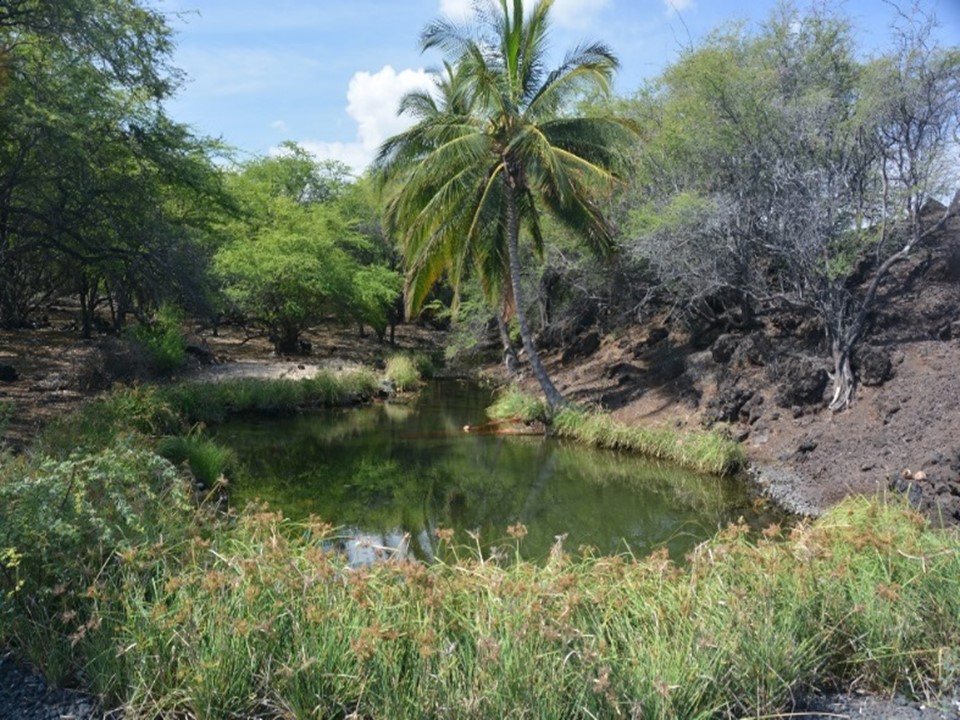
New Tools to Address Threats to Anchialine Pools in the West Hawaiʻi Habitat Focus Area
Article contributed by Brad Stubbs
NOAA and partners have released scientific and outreach tools to better understand and help guide the management of anchialine (AN-key-ah-line) pools within the West Hawaiʻi Habitat Focus Area (HFA). Anchialine pools are brackish, tidally influenced bodies of water with a subterranean connection to the ocean. These sensitive ecosystems support fisheries, cultural practices, and tourism, and are threatened by climate change, invasive species, and other factors. In the coming decades, some anchialine pools will be lost due to rising sea levels, while others will merge to form larger pools.
To demonstrate how anchialine pools are vulnerable to climate change, the West Hawaiʻi Integrated Ecosystem Assessment program collaborated with the University of Hawaiʻi at Hilo, SymbioSeas, and The Nature Conservancy (TNC) to develop an anchialine pools climate change vulnerability brochure. The brochure summarizes the ecology, threats, and conservation efforts for anchialine pools, and includes various projections for water level changes, changes to pools, and the presence/absence of invasive fish.
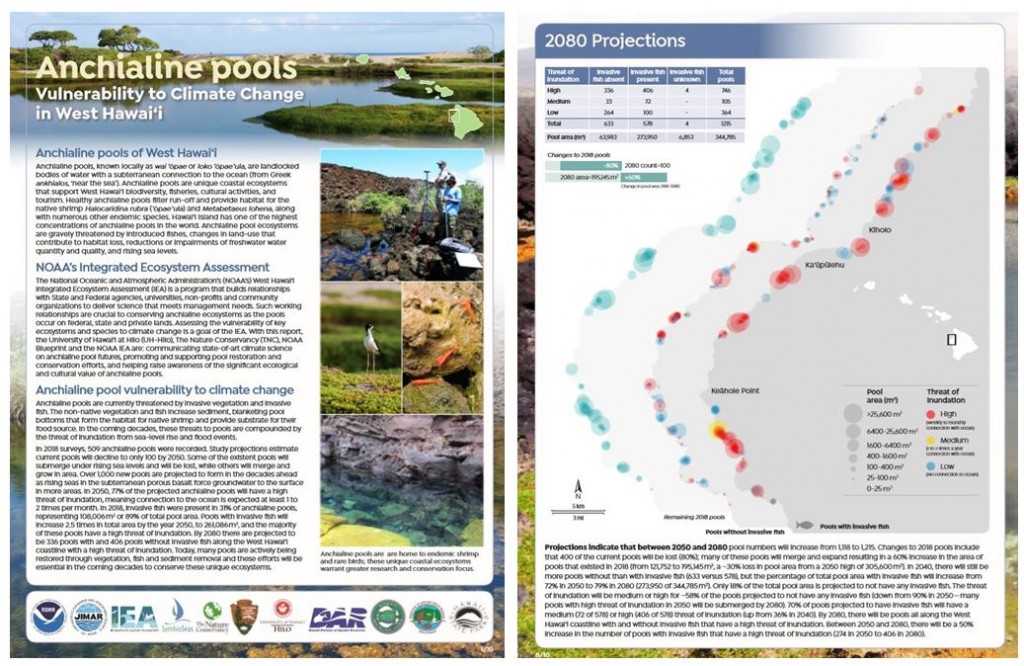
In partnership with NOAA and local stakeholders, TNC developed an interactive tool entitled Ecosystem Effects of Sea Level Change, that can help planners and resource managers understand the potential risk of sea level rise to anchialine pool ecosystems and inform prioritization of restoration and conservation efforts. Users can explore the risk of inundation for anchialine pools for 2015 and for 2040, 2050, and 2080.
These tools and the efforts of community groups like the Hui Loko, are making conservation and restoration of these sensitive habitats possible. Hui Loko is a network of 24 organizations that collaborate in the West Hawaiʻi HFA to protect fishponds and anchialine pools. The group shares resources and manaʻo (knowledge), and assists with restoration (replanting and tending to vegetation, reducing sedimentation, and removing invasive fish), education, and outreach efforts. This collaboration ensures that anchialine pools will be cared for and managed the future.
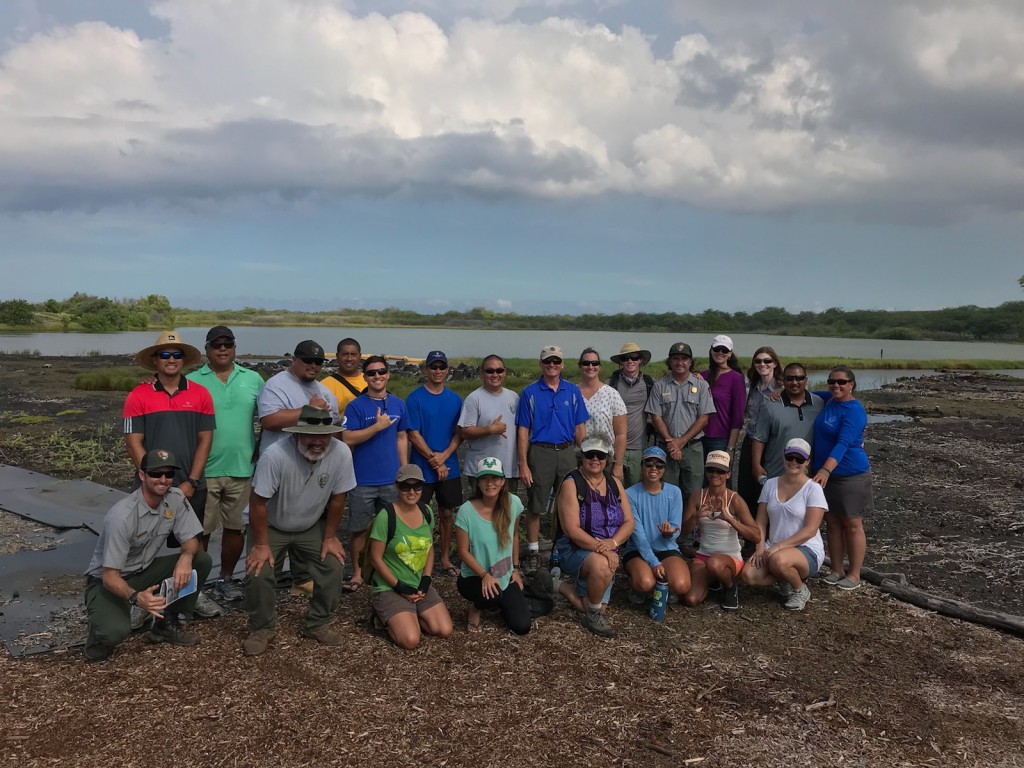
Anchialine Pools in the West Hawaiʻi Habitat Focus Area
Anchialine pools are found in the West Hawaiʻi HFA on the northwestern coast of the Island of Hawaiʻi. The word “anchialine” comes from the Greek word ankialos, meaning “near the sea.” Anchialine ecosystems form in limestone or volcanic rock, which are only found in a few places throughout the world and are most common in the Hawaiian Islands and on Mexico’s Yucatan Peninsula.
In Hawaiʻi, anchialine pools are known as wai‘ōpae, loko ōpae ‘ula, or kāheka. A healthy anchialine pool typically lacks macroalgae, has clear water, and native vegetation. It is home to multiple species of endemic shrimp, with the most common species being the Hawaiian red shrimp (ōpae ‘ula, Halocaridina rubra), as well as birds like the Hawaiian stilt (aeʻo, Himantopus mexicanus knudseni).
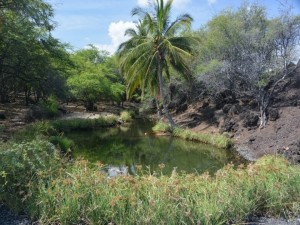
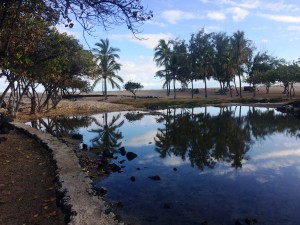
Threats to Anchialine Pools
Anchialine pools are sensitive ecosystems that rely on a delicate balance between subterranean ocean water and groundwater. They are vulnerable to climate change and their distribution and community structure are expected to change due to flooding, erosion, saltwater intrusion, or a combination of these phenomena.
In addition to rising sea levels, introduced fish, invasive vegetation, and reductions or impairments of freshwater quantity and quality threaten anchialine pools. The introduction of predatory tilapia, Poecilids (a family of freshwater fish that includes mollies and guppies), mosquitofishes (Gambusia iffinis), and invasive prawns are thought to be a primary cause of anchialine pool degradation in Hawaiʻi. These invasive fishes eat the endemic ōpae ‘ula and other native pool shrimp, leading to macroalgae accumulation. Introduced terrestrial vegetation can lead to excess nutrients and silt, which changes the food web, restricts the movement of shrimp, and smothers the pool bottom.
These threats are compounded by the threat of sea level rise and pool inundation. Pools will become connected to the ocean more frequently in the coming decades, causing invasive fishes to spread into new habitats. Rising sea levels also push groundwater higher and approximately 1,000 new pools are projected to emerge in low-lying areas by 2050.
These new scientific and outreach tools allow NOAA and partners to better understand how anchialine pools are vulnerable to climate change and how they may be impacted by sea level rise. These tools and collaborative efforts will inform decision making and ensure effective management of these sensitive ecosystems.

